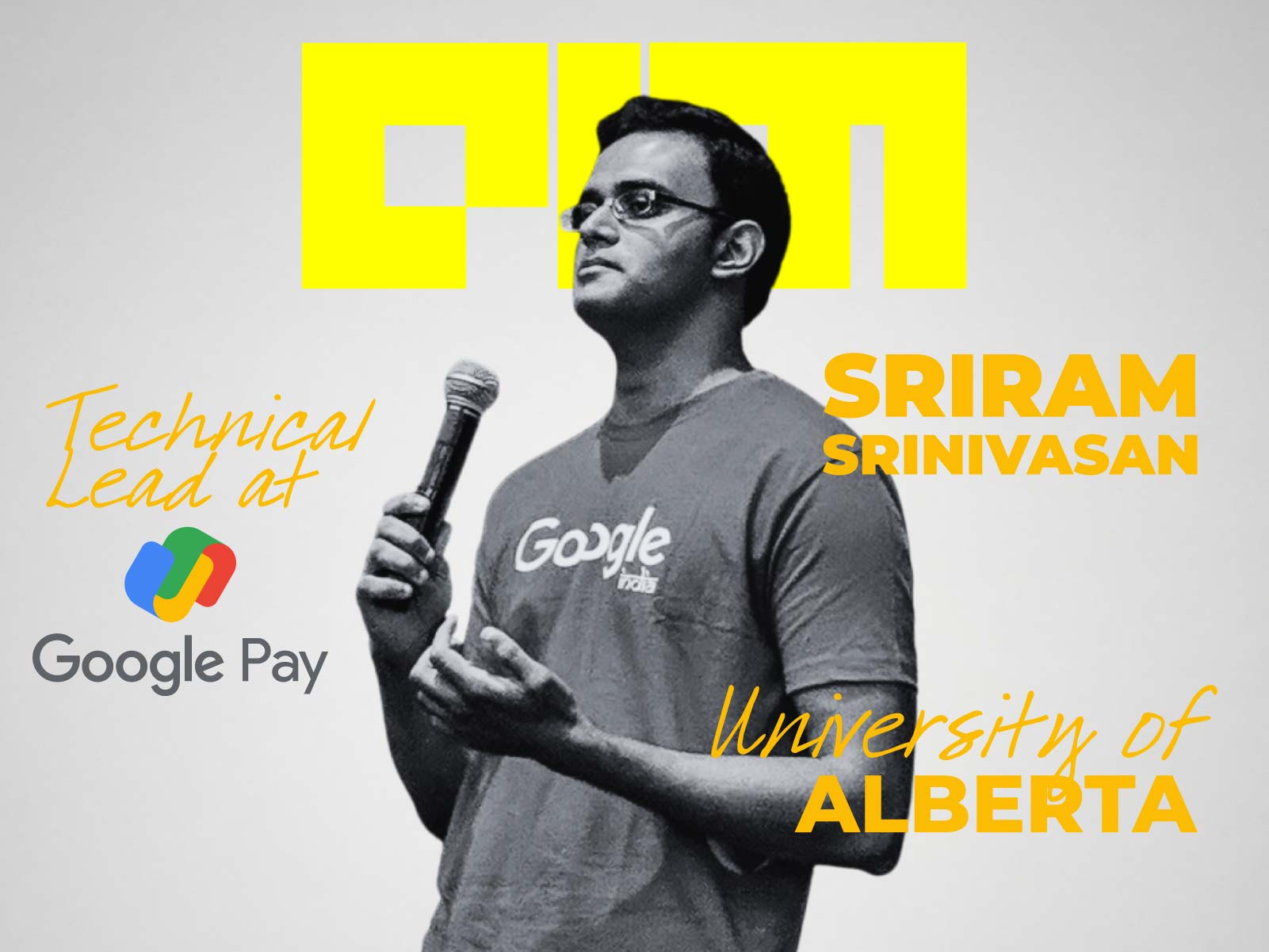“I was lucky to chat about the problem with a cab mate who happened to be VP of Yahoo Labs then. Soon after, I was working at Yahoo with a Research Scientist!”
For this week’s machine learning (ML) practitioners series, Analytics India Magazine (AIM) got in touch with Sriram Srinivasan who is currently working as a Technical Lead at Google. He primarily works on Optimizing Rewards on Google Pay. In this interview, Sriram shares deep insights from his ML journey.
AIM: Tell us about the beginning of your machine learning journey.
Sriram: I graduated with an MSc. in Computing Science from the University of Alberta in 2014. Prior to that, I had completed B.Tech from NIT Trichy and worked for a few years before pursuing my Masters. Since then, I’ve worked at Amazon (briefly), followed by DeepMind as a Research Engineer. I moved back to India and am currently a Technical Lead (TL) of optimizing Rewards on Google Pay. My real exposure to Machine Learning began after undergrad at Yahoo!. Although there was an AI course in undergrad, the teaching methodology restricted it to a memorization routine. Undergrad did expose me to the fundamentals of CS, of which I got interested in algorithmic theory. At Yahoo! I realized that the problem I was working on (segmenting website domains into keywords) could be done better by training a computer to do it rather than heuristics to score segmentations.
I was lucky to chat about the problem with a cab mate who happened to be the VP of Yahoo Labs then. Soon after, I was working on building a model with a Research Scientist there. My initial education in ML was from Andrew Ng’s YouTube lectures, Chris Bishop’s book, and papers relevant to my problem. I managed to build and launch a model in production, but it left me wanting to learn the subject formally, and I applied for a Masters at the University of Alberta, a small but strong school in AI.
AIM: Were there any initial challenges? How did you address, if any?
Sriram: A lot of the initial exploration was through self-study as undergrad courses were woefully outdated and not taught well. MIT’s Opencourseware and Stanford CS lectures were my go-to places for learning ML (pre-Coursera days). The courses at Alberta were quite eye-opening in terms of theory. Math courses like calculus and optimization came in handy while also making me realize the importance of statistics. A strong faculty and peer group helped me bridge the gap between theory and practice.
AIM: Tell us about your role at your current company. What does a typical day look like?
Sriram: I’m a Technical Lead for Optimizing Rewards on Google Pay. It involves figuring out how we can deliver relevant and delightful rewards to users of Google Pay to delight their transaction experience. The solutions to the problem include bringing together areas of ML – particularly Reinforcement Learning, Deep Learning and Constrained Optimization.
AIM: How do you approach any data science problem?
Sriram: I spend a fair amount of time on problem framing, initially. As much as I like ML, I try to start with easy to build & maintain non-ML solutions first. Since ML requires data, the engineering overhead of generating datasets and maintaining the pipelines is a significant one.
After establishing that non-ML baselines are not good enough, I look at whether there are aspects of the problem that make it amenable to learning from data, and if so, identify sources of data that could be used.
In some cases, the data sources are easy (e.g., information about a user, webpage) and in some other cases difficult to obtain (e.g., audio/video inputs, cross-lingual corpus). Another important step before model-building is feature importance: There are multiple statistical measures that one can use to filter out features that are important for the prediction task. I prefer using colab and TensorFlow/Pytorch for prototyping. I also routinely think about whether the prototypes can be productionized easily as it is easier to iterate on a model with lower maintenance. I also spend a fair time evaluating the model by slicing along features of interest and querying the model with values that tend to push the predictions to the extreme.
AIM: What does your machine learning toolkit look like?
Sriram: My toolkit predominantly involves colab notebook + TensorFlow. At work, we mainly use TensorFlow for model training and other ML Infra tools such as TFX. I use colab for prototyping and rely on TFX for productionizing the model.
AIM: Which domain of AI do you think will come out on top in the next 10 years?
Sriram: Given that neural networks themselves went out of favour and are now back in, I’m more interested in the aspects of techniques that help us move forward rather than the techniques themselves. While neural networks allow one to learn end to end with lesser feature engineering, the method of backpropagating might evolve as it requires large quantities of data and is slow. I expect better learning algorithms to be developed and wider use of pre-trained models for fine-tuning. I don’t think it is a race within AI domains. Given the large corpus of data available currently and in the future, unsupervised learning still has a long way to go, especially in the realm of multi-modal learning. I also expect Reinforcement Learning algorithms to shape the training of many models that would be deployed to make predictions and learn from them.
AIM: What advice would you give to aspirants who want to get into ML roles at your company?
Sriram: I tend to view data science/ML as tools in a toolkit. Other tools would include strong programming, fundamentals of CS (algorithmic theory, networking, computer architecture, etc.).
For aspirants keen on specializing in ML roles, I’d suggest focusing on practice (Kaggle contests, ML Hackathons) as well as theory (strong statistical foundations, calculus, ML theory, optimization). While I relied on YouTube lectures and MIT OCW, there exists a plethora of resources now (Coursera, Udemy, fast.ai). A special shoutout to Khan Academy for highly useful free video lectures in math (basic and advanced). I would also strongly recommend checking the following resources:













































































